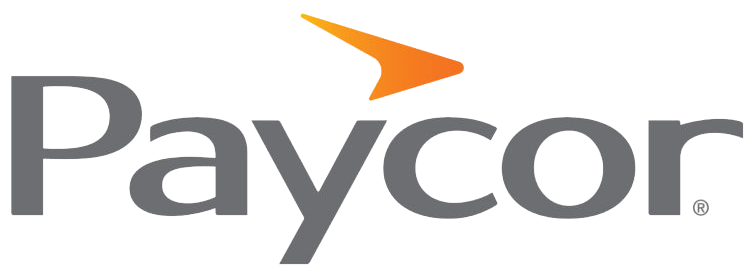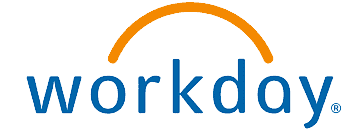Updated: Oct 27, 2024, 8:16pm
A human resource information system (HRIS) helps companies manage the administration of their people. These systems are used by HR managers to handle payroll, training modules and talent acquisition. Forbes Advisor dug into the details of dozens of the top HRISs on the market and rated each to find the overall best HRIS solutions for small businesses.
Why You Can Trust Forbes Advisor Small Business
The Forbes Advisor Small Business team is committed to bringing you unbiased rankings and information with full editorial independence. We use product data, strategic methodologies and expert insights to inform all of our content and guide you in making the best decisions for your business journey.
We reviewed 25 providers using a detailed methodology to help you find the seven best human resource information systems for small businesses. Our ratings consider factors, including pricing, general features, the availability of a mobile app, benefits tracking and learning management tools, additional features (including shift scheduling and live customer support) and reviews and ratings. All ratings are determined solely by our editorial team
The Best HRIS of 2024
Compare the Best HRIS Solutions
What Is an HRIS?
An HRIS helps those in HR departments or otherwise running a company to organize and track employees. One of the key components of an HRIS is managing payroll, but these systems are not limited to that. Those using the software will be able to manage employee performance, track competency and set training schedules. The system becomes the central place where employee data is held, making it the streamlined hub for human resources teams to handle any situation that arises with an employee in an organized and documented manner.
Benefits of an HRIS
Getting a reputable HRIS can significantly benefit your company. Here are some key benefits of using an HRIS software solution:
- Organization: An HRIS keeps personnel data on hand and easily accessible. Folders store files in an organized fashion that helps HR administrators find what they need in a flash.
- Regulatory compliance: Automated onboarding and offboarding protocols make businesses less likely to encounter compliance issues.
- Positive face to employees: The employee portal gives employees access to information that they would otherwise need to contact someone for. This saves everyone time and is a good way to engage employees and keep them happy.
How To Choose the Best HRIS
There are many HRISs to choose from. Of course, you want to choose a system that meets your budget, is easy to implement and offers all the solutions that you need. When making your decision, consider these areas before you finalize your purchase.
Essential Features
Most HRISs have a common set of features offered in the solution. But managers should review each solution to ensure that it has these features and that they meet their HR needs.
Essential features that an HRIS should have include:
- Onboarding management: A good HRIS makes onboarding a breeze by sending new hires the right forms and training to get settled in properly. It collects e-signatures on forms and stores them in the employees’ files.
- Database management system: The HRIS should eliminate the need for bulky employee files. All pertinent data should be held in a digital employee file that is easy to access by managers and employees.
- Employee self-service: Employees should be able to access their files and update information as needed. This may be updating tax information for payroll purposes or changing an address and contact information. Good systems give employees the access that they deserve.
- Time management: HRISs should offer the ability to manage time off and attendance. Some HRISs use biometric devices to manage attendance, making sure it is accurate and a true reflection of employees’ work. HRISs will also manage time off, both paid and unpaid, to ensure shifts are covered and employers are not left without the proper notifications of having people out.
- Payroll management: One of the most critical features of an HRIS is payroll management. The system allows managers to quickly and easily process payroll for each employee and files the right tax paperwork at the right times.
- Performance management: Managers need to have impartial ways to manage performance. HRISs have a feature where employee reviews are regularly scheduled and conducted, providing necessary feedback to employees. These systems also allow employees to self-assess their performance, helping create self-awareness of their strengths and weaknesses.
- Mobile application: The best HRISs have a mobile application that allows managers and employees to access data on the go. This makes it possible to manage teams from anywhere, keeping data accurate and up to date.
Types of HRIS Software
There are four common types of HRISs. Take a look at the following to better understand what type of HRIS is best suited for your company’s needs:
- Operational HRIS: Operational HRISs focus on internal data when gathering and processing information. You might use internal data to better improve your company’s diversity among employees.
- Tactical HRIS: This type of HRIS uses data to allocate resources properly. Data helps managers recruit, design job descriptions, train and develop employees to grow within the organization.
- Strategic HRIS: This type of HRIS looks at the organization’s goals and mission and cultivates data that helps in workforce planning.
- Comprehensive HRIS: Comprehensive HRISs are an all-in-one solution that collects HR files, recruiting details and employment development data. It becomes the hub for all workforce-related information.
Stakeholder Considerations
Different professionals in your organization need to be able to work with the HRIS. Stakeholders include:
- HR: These professionals need to access employee data to help in the management and development of team members.
- IT professionals: Work to implement the HRIS solution seamlessly into the organization’s software solution.
- Payroll: Use HRIS solutions to easily and efficiently manage and process payroll so that employees get paid correctly and on time.
- Managers: Access data to help them train and develop team members to be more productive parts of the organization.
What Does an HRIS Cost?
HRIS platforms have a wide range of costs depending on the provider you decide to work with. Some platforms, such as ClickUp and monday.com, have free programs that are great starting points. Other platforms start at low as $5 per month, per user, but may have a monthly fee associated with the subscription. For example, Paycor has a monthly subscription fee starting at $99 per month plus a per-user fee of $8 per month.
Because most platforms have you pay per user, you can save on costs by limiting the number of users allowed to access the system. Give access only to those who are essential in managing your teams.
HRIS vs. HCM vs. HRMS
There are three human resource systems that you may hear about that are similar in function. These are a human resource information system (HRIS), human capital management (HCM) and a human resources management system (HRMS).
An HRIS is focused on basic employee data, whereas an HCM seeks to give you more engagement with employee performance. The HRMS is more detailed in management and reporting. Choose an HRIS if you just need to track a lot of data with minimal interaction. Choose an HCM if you want to spend time developing employees. The HRMS is the best choice if you need to run a plethora of reports while managing employees.
In practice, many HRISs, such as Paycor, extend and cover the needs of HCMs and HRMSs, eliminating the need to choose.
Methodology
Forbes Advisor uses an unbiased five-star rating system to rank each company we researched. To determine the best human resources information systems for small businesses, we analyzed 27 different companies across five information categories and 34 unique criteria. Each of these categories were weighted to favor the features that small business HR teams find valuable in an HRIS provider
Here are the categories we used to rank the providers that made the top of the list:
Pricing
When it came to pricing, we wanted to see if there was a free trial or free version available and then determined if the pricing was considered expensive, moderate or cheap. This accounted for 10% of our weighted scoring.
General Features
When considering general features, we looked to see if the software solution offered a mobile app as well as an online portal. Preference was given to solutions that offered applicant tracking, payroll and benefits administration, time tracking, e-signatures and learning management tools. We also considered if there were alerts or reminders offered. Access creating org charts, the ability to provide contractor payments and performance reviews were other general features we considered important. General features accounted for 30% of our total score.
Additional Features
Additional features that we considered “nice to have” included software integrations to ease workflow, shift scheduling options and engagement tools. Bonus points were given to companies with PTO tracking, custom branding and live customer support. These additional features amounted to 20% of the total score.
Third-party Reviews
We considered what customers on major review sites had to say about the software and what they were rated. Preference was given to companies that had a 3.5-star or better rating on G2 and Capterra, and we considered the number of reviews in our scoring as well to help reduce bias. Reviews accounted for 10% of the total score.
Expert Analysis
Finally, based on our market research and the categories listed above, we also ranked additional criteria from customer reviews, such as any standout features, popularity, ease of use and value for the money. These final criteria made up 30% of the total score.
Learn how we evaluate HR management systems.
Frequently Asked Questions (FAQs)
How does an HRIS help employees?
An HRIS gives employees a central place to access their benefits without having to contact HR. This helps employees to stay engaged and use their time efficiently.
What are HRIS platforms used for?
HRIS platforms give HR professionals and managers a central place to capture, track and manage employee data. It helps with everything along the employee life cycle from onboarding to dismissal.
How do I implement an HRIS?
Work with your IT department to allow employees to get the right access to the HRIS. Those in HR departments and managers will have more access to data than employees will have. Employees will be able to access their own profiles.
Are HRIS solutions secure?
HRIS solutions are designed to protect the sensitive data that HR records possess. Organizations can help ensure security by requiring data to be accessed only while using a virtual private network (VPN).
Is an HRIS hard to learn?
Navigating the ins and outs of an HRIS will take some time. Training and tutorials can help accelerate the learning curve so that you can utilize all the capabilities of the software solution.

























